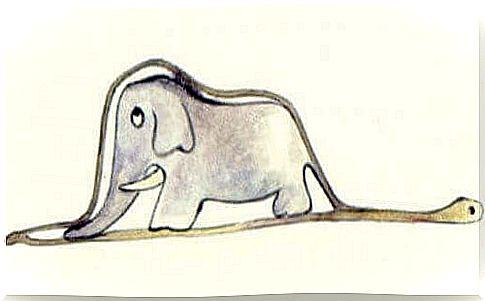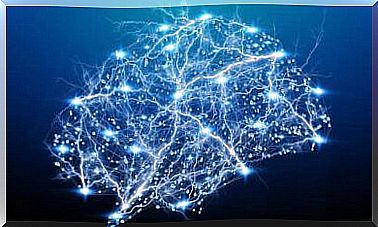Divergent Thinking: What It Is And How To Develop It

Divergent or lateral thinking is characterized by the ability to generate multiple and ingenious solutions to the same problem. It is a spontaneous, fluid and non-linear mental concentration, which is based on curiosity and non-conformism. In fact it is also a very common way of thinking in children, for whom joy, imagination and freshness offer more freedom to reason.
Divergent thinking is topical. In a society where everyone has similar skills, there comes a time when large companies begin to evaluate other capabilities, other dimensions that offer ingenuity, vitality and genuine human capital for their projects. A person capable of delivering innovation, creativity and new goals can therefore become an excellent candidate for many of these organizational projects.
However, it must be admitted that our schools and universities, in their methodology, continue to prioritize a clearly convergent kind of thinking. In the 1960s, JP Guilford differentiated and defined convergent thinking and divergent thinking.
Although he stressed the importance of training children in the latter mental approach, educational institutions did not pay much attention to him. In general they gave and prioritize a reflection (or rather, the lack thereof) in which the student must apply linear thinking and a set of rules and processes to reach a single solution, which is the one defined as correct.
While it is true that on many occasions this strategy is useful and necessary, we must admit that real life is too complex, dynamic and imprecise for us to believe that our problems have only one option. Therefore, we need to develop genuine divergent thinking.
For this reason, there are many educational centers that encourage their students not to just find the right answer. The goal is to be able to create and suggest new questions .

Divergent thinking and its psychological processes
Before proceeding, it is good to clarify one thing. No thought is better than another. Convergent thinking is useful and necessary on numerous occasions. However, the real problem is that they have “trained” us to think one way, leaving aside (and even completely nullifying) spontaneity, ingenuity and intriguing freedom.
In many divergent thinking training courses, it is common for students to be asked questions such as:
- What things could be done with a brick and a pen? If we give you a toothbrush and a stick, what methods of use come to your mind?
We are aware that initially it can be difficult to come up with even a single idea. However, there are people who can give numerous ingenious answers and ideas, as they have a high potential for what Edward de Bono in his day called “lateral thinking”. To better understand how it works, let’s see the types of psychological processes that make it up.

Semantic networks or connectivity theory
Divergent thinking is able to find relationships between ideas, concepts and processes that apparently bear no similarity. Creative psychologists tell us that people have different mental networks of association :
- People with “steep” semantic networks are governed more by logic and linear thinking.
- People with “flat” semantic networks have much more connected yet flexible mental networks. This means that sometimes they relate two things that don’t make sense to each other, but little by little they use other networks until they reach an ingenious and innovative idea.
Right hemisphere and left hemisphere
We’ve all heard of the theory that the right hemisphere is the creative one, while the left is the logical one. Based on this, people who make use of divergent or lateral thinking will make preferential use of the right hemisphere. We actually have to be careful with such ideas about lateralization or brain dominance, because there are many nuances.
We cannot see the brain as an entity with bounded areas. In fact, when we have to create an idea, be it ingenious, conservative, logical or highly creative, we use this organ in its entirety. However, the key is how we connect one idea with the other. The most ingenious people make use of a thought tree, meaning their brain connections are very intense in both hemispheres, not just one.

How to train divergent thinking
We said at the beginning, all of us, whatever our age, are able to train our divergent thinking. To do this, we need to focus on four very clear objectives:
- Improve our fluency : the ability to produce a large number of ideas.
- To improve our flexibility : to be able to create different ideas based on different fields of knowledge.
- Originality : ability to create innovative ideas.
- Improve our elaboration : ability to improve our ideas, to develop them with more refinement.
Here are four ways to do this.
Exercises in syneptics
“Syneptic” is a term coined by the psychologist William JJ Gordon. In practice it means being able to find the connections and relationships between concepts, objects and ideas that apparently have no union. This exercise requires high mental activity, and we can do it every day by choosing the concepts ourselves. For instance:
- What can I do with a paper clip and a spoon?
- What relationship could exist between the Limpopo River in Africa and Lake Baikal in Siberia?
Scamper technique
The Scamper technique is another creative idea development strategy developed by Bob Eberle. It will be very useful to create something innovative and to train our thinking. For example, let’s say we need to come up with an idea for our work. Once we have this “idea”, we will pass it through these “filters”:
- 1) Replace some element of this idea with another (what can we change in the way we have fun? And in our way of working?).
- 2) Now let’s combine them all (What can we do to make our job more fun?).
- 3) Let’s adapt them (What do they do in other countries to work with less stress?).
- 4) Let’s modify them (How to work and not get stressed?).
- 5) Give it other uses (what is there in my work that can make it fun even if it wasn’t specifically designed for this?).
- 6) Let’s eliminate some of them (what if I arrive a little early to make the most of the day?).
- 7) Let’s reformulate (What would happen if…?).

The mood and a good rest
A study conducted by psychologist Nina Lieberman, collected in the interesting book Playfulness: Its Relationship to Imagination and Creativity , revealed something interesting. Divergent thinking goes hand in hand with joy, optimism and inner well-being. Having good social relationships, enjoying a good rest and being free from pressure, anxiety and stress optimizes divergent thinking.
It is clear that at times, in our adult duties, in our lifestyle so full of pressures and worries, we neglect most of these very important dimensions. We could also conclude that this type of thinking also arises from a sort of attitude towards life, in which one can be free, happy, nonconformist, open to experiences …
We cultivate these dynamics. Living well to think better can certainly be a good goal to work on every day …









